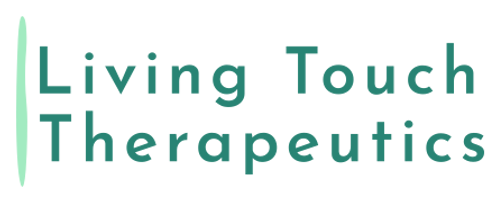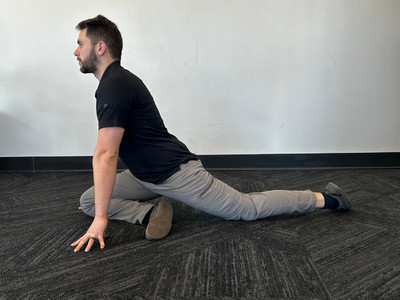Pigeon Stretch
- Benjamin Mishleau
- Jan 23
- 4 min read
Updated: Mar 4
The pigeon stretch has its origins in traditional yoga, where it is commonly referred to as "Eka Pada Rajakapotasana." The pose has been practiced for centuries as part of yoga's focus on flexibility, balance, and mindful movement. Its name, "Pigeon," is derived from the appearance of the pose, where one leg is bent forward, and the other is extended behind, resembling the posture of a pigeon. The pigeon stretch was popularized in the West during the 20th century as yoga gained widespread appeal, particularly in the 1960s and 1970s. Over time, it became a key movement in not just yoga practices but also in physical therapy and fitness routines due to its effectiveness in targeting tight hips and lower back muscles. Today, it remains a staple stretch for increasing hip mobility and relieving muscle tension.
Purpose: Targets the hips, glutes, and lower back. It is highly effective for increasing hip mobility, releasing tension in the hip flexors, and improving overall lower body flexibility. This stretch is particularly beneficial for individuals who sit for long periods or engage in activities that involve repetitive leg movements.
Targeted Areas: Hip flexors, glutes (specifically gluteus maximus and medius), piriformis
Instructions:
Begin in a tabletop position on the floor, with your hands and knees on the floor.
Bring your right knee forward and place it behind your right wrist, with your shin angled towards your left hip. Extend your left leg straight behind you, keeping your knee and top of the foot facing downward.
Lower your hips towards the floor while keeping your chest upright.
Gently lower your torso over your right leg, allowing your body to fold forward and feel the stretch in your hips and glutes.
Hold the position for 20–30 seconds, breathing deeply and relaxing into the stretch.
Slowly return to the starting position and switch sides, repeating on the left leg.
If getting off of the ground is difficult for you, try doing this stretch with your leg on a bench as pictured.
Tips:
Keep your back straight and avoid rounding your spine to ensure proper form.
If your hips are elevated, place a cushion or yoga block under them for additional support.
Avoid forcing your body into the stretch—only go as deep as your flexibility allows.
Engage your core to keep your pelvis stable and prevent any unnecessary strain on the lower back.
Who Should Do the Pigeon Stretch?
The pigeon stretch is an excellent exercise for increasing flexibility and mobility in the hips, glutes, and lower back. It is ideal for:
Athletes: Especially those in sports that require flexibility and mobility in the hips, such as running, cycling, yoga, and dance.
People with Tight Hips or Glutes: The pigeon stretch is particularly beneficial for individuals with tight hip flexors, glutes, or piriformis muscles, as it helps release tension in these areas.
Individuals with Lower Back Discomfort: The stretch can help alleviate lower back discomfort by improving hip mobility and releasing tension that may be contributing to back pain.
People with Sedentary Lifestyles: Those who sit for long periods (e.g., office workers) can benefit from the pigeon stretch to open up the hips and counteract the effects of prolonged sitting.
People Looking to Improve Overall Flexibility: It’s great for anyone looking to enhance their flexibility and range of motion, particularly in the lower body.
Who Should Avoid or Modify the Pigeon Stretch?
While the pigeon stretch is beneficial for many, certain individuals should avoid or modify it due to specific limitations or conditions:
People with Knee Injuries or Discomfort: The pigeon stretch involves bending the knee at an angle, which can be uncomfortable or exacerbate knee injuries such as ligament or meniscus issues. If knee pain is present, consider using modifications or a different stretch targeting the hips and glutes.
Individuals with Hip Injuries: Those with hip issues, such as hip labral tears or hip arthritis, may find this stretch uncomfortable and should avoid it or perform it with modifications to reduce strain on the joint.
People with Lower Back Issues (Severe): The pigeon stretch requires forward flexion of the spine, which may exacerbate lower back issues, especially in individuals with herniated discs or sciatica. Modifying the stretch or avoiding it until back issues are resolved may be necessary.
Pregnant Women (Later Stages): The pigeon stretch can be challenging in later pregnancy due to changes in pelvic alignment and balance. Modified stretches that focus on gentle hip opening are usually recommended instead.
Beginners with Limited Flexibility: If you have limited flexibility, especially in the hips or thighs, performing the pigeon stretch too deeply could cause discomfort or strain. It’s best to ease into the stretch gradually or use props (e.g., cushions or yoga blocks) for support.
People with Sacral or Pelvic Issues: Those with sacroiliac joint dysfunction or pelvic instability should be cautious with the pigeon stretch, as it can put excess strain on the pelvis and lower spine.
If It Causes Pain: If in doubt, if it causes pain, don't do it.








Comments